#Pictorial Webster's Dictionary
Explore tagged Tumblr posts
Text
Colors of Humanity Art Gallery - "Landscapes" 2023 Call for Entry - Online Art Show

THEME- According to Webster Dictionary, the definition of landscape is: “Land´scape n. 1. A portion of land or territory which the eye can comprehend in a single view, including all the objects it contains. 2. A picture representing a scene by land or sea, actual or fancied, the chief subject being the general aspect of nature, as fields, hills, forests, water, etc. 3. The pictorial aspect of a country." It can be expressed many ways and we look forward to seeing your interpretation. PAY IT FORWARD- We will be donating 10% of all entry fees from this show to the Global Food Initiative. GFI assists hungry people in developing food security. GFI has raised over $8,000,000 for community development projects in numerous countries around the globe. Colors of Humanity Art Gallery, LLC is not affiliated with the Global Food Initiative. ELIGIBILITY- All artists 18 and over may enter. JUDGING CRITERIA- Originality, interpretation, quality, demonstration of ability, and usage of medium. JUROR- Janelle Cogan Entry. ENTRY FEE- $20 for 1 or 2 pieces (You may enter more than once if you have additional works.) AWARDS- Cash prize will be given to the Best of Show winner. Additionally, the Best of Show winner will be featured. His or her artwork will be on the cover of the show and it will be largely displayed with an article about them and their work. Other winners will be featured and have similar recognition. SALES- We are a commission free gallery.
DEADLINE: September 15, 2023
For more information: https://www.theartlist.com/colors-of-humanity-art-gallery-landscapes-2023-call-for-entry-online-art-show
#ColorsofHumanityArtGallery #Landscapes2023
#TheArtList#colors of humanity art gallery#landscapes2023#art#art call#call to artists#call for entry#online art show
0 notes
Link
Hey lads, here is the transcript for the second episode of the podcast.
Hello and welcome everyone out there listening to this program.
Thank you for tuning in once more for another episode on songwriting tips & tricks
Have you ever been searching for a better way to rephrase an idea, or maybe you've been looking for a word that fits the meter or beat or paints a more beautiful image in the audiences head? If that is the case, then today's episode will help you with just that.
Today's episode is dedicated to a powerful weapon that should be an essential tool in your songwriting. Of course, we are talking about synonyms.
What is a synonym? Or instead, what is the definition of the word synonym.
1 one of two or more words or expressions of the same language that have the same or nearly the same meaning in some or all senses
2 a word or phrase that by association is held to embody something (such as a concept or quality) a tyrant whose name has become a synonym for oppression
So close your eyes for a minute, or think back to the last song you have been working on. Are you there? Great. Now try to remember writing the lyrics and what you have been thinking about. Did you write the words straight from your mind? Did you contemplate the pictures and how you could clarify or rephrase it more colloquial? If you did, then you are already implementing this powerful tool. If not, don't worry, it is rather tedious work and may take a lot more time than your usual writing.
But how do we use a Thesaurus properly, and what is the intention behind it.
So in general, firstly we open our Thesaurus, may it be digitally or analogue. Then we search for a word we want to get a synonym for, so you search for the entry like you would in a dictionary, or you type it in a digital option. Let us simulate this for a second. So given we are looking for a sharper word for the rather common word heart. In the right context, that word could be compelling on its own, and maybe your style of writing could be based on an everyday style of speech. However, perhaps you want to re-illustrate the picture.
So we search for the entry heart in our Thesauruses. Type it in on MacMillan.And on the left, I have already searched for the word in the rather heavy book (which may be the significant disadvantage of an analogous one). And from here it is quite easy. When we have found the word, we have to think about the meaning we want it to convey. In this case, heart does not only stands for an organ in a body but has various meanings depending on the context. So in the internet version, in our case, the MacMillan dictionary, this is quite easy and well-organised. We search for the right meaning, and just beneath the definition of the word, there is a button for the Thesaurus. As easy as that. Then there is an array of general terms about the concept behind the word heart. So as some of you might know there is a theory in linguistics or language studies in general which is called the semiotic-triangle. This triangle tries to explain the cognitive work when we read, write or speak a word or vice versa. So when we think about a picture we want to convey may be the heart, in this case, we might immediately know the word in our native language. Still, if you are writing in your second language, it might take some more time. So the logic behind this triangle is that the word heart, of course, is just defined term in your language. At the same time, in another language, like in German, there is a different word for the concept behind this. Anyway, you get the point. A word is not bound to the picture. And of course, both the idea and the word are not the real thing.
And this is excellent news for us songwriters. This means that writing has seemingly endless possibilities for rephrasing and conveying pictures. So rephrasing is an essential and essential part of speech.
So let's get to work. We have found the Thesaurus online an see where the internet comes in handy, not only do we have it at hand at any location, but it is easy to handle. The offline version of this is not as fast as the online one. However, we might get more information and an interesting choice of words that are not available on some platforms and has a special sophisticated touch to it. But that depends on your choice of Thesaurus.
Now you might ask, where do you get neat synonyms and how can you use it in your songs?
Perhaps just have a look in a nearby library, book or antiquities shop or do a little online research for a suitable Thesaurus. For my taste, MacMillan, Merriam-Webster or the Oxford dictionary are reliable sources with high esteem. Analogous Thesauruses should also be adequately collected and published by a renowned publisher. If you are a student at a university, there may also be a table in the linguistics faculty giving away old books that and if you are lucky like I was with my Oxford Thesaurus, you get a tremendous Thesaurus for free. Having one at home comes in quite handy when you are writing.
So there is a little poem we are going to write together now. It intentionally is not sophistically well written nor rhyming, as we think about the synonyms to rhyme it with.
The pain I try to drown in bottles.
The hole it left me with alone
The broken heart lies down in pieces
You swept away so easily
So well, not much of a story, it is quite open and un-rhyming. However, some pictures could be coherently connected. So, we need to look for the nouns adjectives and adverbs, as they convey the most pictorial meaning.
The PAIN I TRY to DROWN in ALCOHOL.
The HOLE it LEFT ME with ALONE
The BROKEN HEART is DOWN in PIECES
YOU SWEPT away so EASILY
The nouns are the most critical conveyors in language, as they determine the verbs that follow it and also have specific attributes. So in order, we will look up nouns first, then think about the verbs and then have a look for the adjectives and adverbs. In this case, I will be using the MacMillan Thesaurus.
A suitable noun for pain would be agony or distress, I find as it paints a picture of great pain and is more specific.
Next up Alcohol, MacMillan does not have the word I am searching for, so I head over to Merriam-Webster. I like the bottle, as it is quite illustrative and fits the broken pieces in the next line.
Another word for HOLE would be crack, and I like this one as it has a delicate touch to it.
Heart, we had earlier, and a suitable word which is quite the contrary to the picture is virtue. And if the protagonist is a man, it leaves the impression of weakness and weariness. Let's try this once and change the to my as well as it is more personal. To my mind, I'm going to drop the is. We are also going to stick with pieces in this case as I cannot find a suitable word that is of my liking.
So this far we have got:
The distress I TRY to DROWN in bottles
The cracks it LEFT ME WITH alone
My broken virtue down in pieces
and you SWEPT AWAY so easily
The last line is mainly verbal and adverbial, so we're going to proceed with the verbs.
For verbs, I prefer Merriam-Webster, as there is a whole section between a noun synonym that find synonyms for the verb.
To try, we are going to trade in to strive, as it also has the same sound as try but has a more zealous feeling and in this context seems more vulnerable. Drown is left the same. The next line is also staying just as it is for now. The next line is without a verb, and the next line suits the picture of shattered glass and erasing all evidence.
So far, we have:
The distress I strive to drown in bottles.
The cracks it left me with alone.
My broken virtue down in pieces.
And you swept it away so easily.
So next up adjectives and adverbs.
The first line has none, the second one only has the alone. And the Thesaurus has on one's own as a suggestion. And thus I'm rephrasing the line to The cracks I'm left with on my own. The broken virtue could also be sinking to pieces as it gives an exciting connotation to the act of falling and cracking open. Perhaps a slow-motion memory or a submerged feeling of shock. The easily is quite dull and common, so the Thesaurus also suggests naturally. In this picture, I find it rather suitable, as he/she appears to be emotionally cold and perhaps a notorious heartbreaker. I'm adding a pronoun in the last line, and we are about done.
So eventually we end up with something like this:
The distress I strive to drown in bottles.
The cracks I'm left with on my own.
My broken virtue sunk to pieces.
And you swept it away so naturally.
Well, it is not a Shakespearean masterpiece. However, this is the first synopsis perhaps, from where we can continue with the next part of the story.
So for now, I think this is a great start. Maybe some of you want to try using my poem with your Thesaurus and start telling your own story from there. I'd be thrilled to hear some of your own interpretations that have different twists.
As you can see, you can find synonyms for nearly every word you might be searching for. Maybe you understand now, how powerful this tool can be. An interesting exercise is using a verse or chorus from one of your favourite songs and try rephrasing it. It opens up a whole world of opportunities, as suddenly there are so many words you can choose from. While pop-music today sometimes is somewhat stodgy in its choice of words, maybe you can go this extra mile to add appealing pictures to your lyrics.
So if you have a few minutes, look up your favourite song and rephrase a few lines from the song. If you like, just send me a message with your poem, and I read it out in the next episode.
Okay, just one more thing that pops up in my mind right now. I guess that most of you listen to music in the language you are using in songwriting as well. An inspiring approach to new inspiration or idea could be to use a song in a language that you are not writing in, in my case that would be German, roughly translate it and do the same thing we did earlier. You might come to entirely different ideas and pictures that lead to a number one hit while telling the same story with different words.
So thank you for listening to this episode. There is more to expect in the next month, and I am so thrilled to continue this program.
I want to leave you with a song recommendation today, and I am really inspired by the style of writing that is implemented. An artist I discovered a few weeks ago. Boy In Space, if you haven't heard of him, has heartbreaking lyrics that are so illustrative. His song Drown is a touching ballad and really well-written. So not only the song is really catchy and flawlessly performed, but the lyrics in themself carry a lot of meaning and fit the music so beautifully. He has recently been the opening act for Alec Benjamin, and his social media is really down to earth and fun to follow. Give it a listen and note down some pictures, rephrase his songs if you want to as well and happy songwriting.
So long I hope you enjoyed today's episode and stick around for another round next time. If you like the format, please feel free to support it by subscribing to it and marking it 5 stars. More tips are available on the Tumblr-blog on songwriting tips & tricks. I wish you all the best and see you next time.
Have you ever been searching for a better way to rephrase an idea, or maybe you've been looking for a word that fits the meter or beat or paints a more beautiful image in the audiences head? If that is the case, then today's episode will help you with just that.
We are about to discuss different reliable Thesauruses, be it digital or analogue, rephrase a sample poem and devise a scheme on how to rephrase a line. In the end, you'd be fully aware of using synonyms properly, finding new approaches to writing original lyrics and getting new ideas from rephrasing your favourite songs.
If you like the format, leave a quick review and subscribe to the show. If you know friends who are searching for a program just like this, just let them know as well. If you have any suggestions or feedback, leave it in the comments or send me a message on any social media platform.
Until the next episode, as always, happy songwriting.
Kieper
#songwriting#podcast#anchor#apple podcast#google podcast#songwriting tips#music#lyrics#writing#inspiration
3 notes
·
View notes
Text
I’m about to get real (Pictures)
, Many times I have asked the question on Facebook, “If something is forbidden for the Jews and/or the Christians, is it then logical to assume it is forbidden for the Muslims?” I always get no answer, even though the answer is obvious. The answer is yes, of course. So lets break down the issue of pictures by starting with the Second commandment given to Musa (A.S.)...
Allah SWT says in the Bible, In Exodus 20: 4-6:
“Thou shalt not make unto thee any graven image, or any likeness of any thing that is in heaven above, or that is in the earth beneath, or that is in the water under the earth: thou shalt not bow down thyself to them, nor serve them: for I the Lord thy God am a jealous God, visiting the iniquity of the fathers upon the children unto the third and fourth generation of them that hate me; and showing mercy unto thousands of them that love me and keep my commandments”
The keywords in these verses are IMAGE and LIKENESS...
Graven Image means a carved statue either from wood or stone or other materials. But we must not ignore the meaning of the words Image and likeness.
The Merriam-Webster dictionary defines an image as: a visual representation of something: such as a likeness of an object produced on a photographic material, a picture produced on an electronic display (such as a television or computer screen), the optical counterpart of an object produced by an optical device (such as a lens or mirror) or an electronic device.
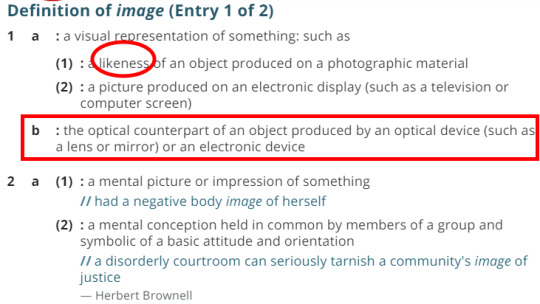
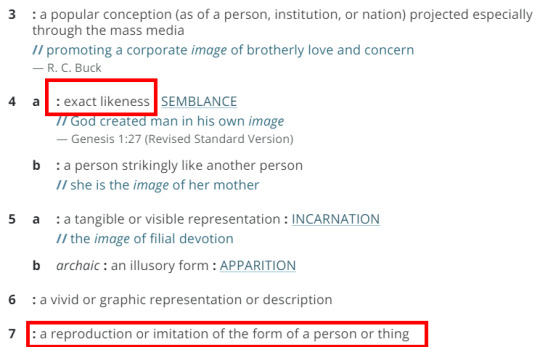
Next we will look at the word Likeness...
The Merriam-Webster dictionary defines a Likeness as: Copy or Portrait,
other words for likeness are Image or PICTURE...

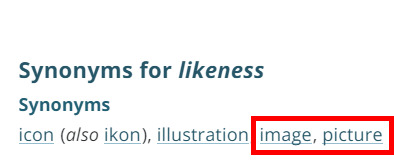
“Thou shalt not make unto thee any graven image, or any likeness of any thing that is in heaven above, or that is in the earth beneath, or that is in the water under the earth”
So does this commandment include pictures? of course it does, it says OR ANY LIKENESS.. is a picture not a likeness... of course it is.
So what is a picture? only a drawing? Well again we look to the Merriam-Webster dictionary and it defines a picture as follows; a design or representation made by various means (such as painting, drawing, or photography) So no a picture is not just a drawing, because picture is defined as a representation made by various means such as Photography.. so a photograph is a picture.
The Merriam-Webster dictionary defines a photograph as a picture or LIKENESS obtained by photography.
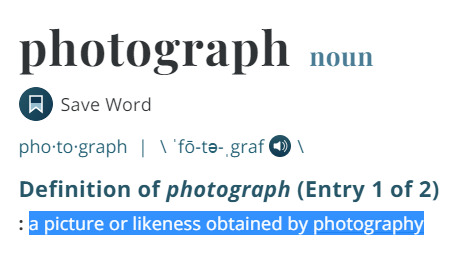
You don’t need to be a Religious or Christian scholar to know that images of all sorts from all means are forbidden for Jews and Christians. Statues, Drawings and Photographs of any living thing.... But what about for Muslims? Just because they are forbidden for Jews and Christians as is proof from the bible.
But surely that doesn’t mean they are forbidden for Muslims, right?
WRONG!:
Narrated Abdullah ibn 'Umar (d. 73H) radiallahu 'anhu: Allah's Messenger sallallahu 'alayhi wa sallam said, "Those who make these IMAGES (suwar) will be punished on the Day of Resurrection, and it will be said to them, make alive what you have created." [Al-Bukhari 7/541, no.835; Muslim, 3/160, no. 5268]
Is an Photograph an image? YES!
Abu Hurayrah radiallahu 'anhu reported Allah's Messenger sallallahu 'alayhi wa sallam as saying, "Angels do not enter a house (or any other place) where there are statues (tamathil) or pictures (tasawir)." [Muslim 3/1162, no. 5276]
One should realize that the prohibition of picture making is EXTREMELY SEVERE, that it is counted among the enormities, and the threats against doing it are very emphatic. Imam Bukhari and Imam Muslim relate that a man came to Ibn Abbas (Allah be well pleased with him and his father) and said, “My livelihood comes solely from my hands, and I make these pictures. Can you give me a legal opinion about them” Ibn Abbas told him, “Come closer,’ and the man did. “Closer,” he said, and the man did, until he put his hand on the man’s head and said: “Shall I tell you what I heard from the Messenger of Allah, Prophet Muhammed (Allah bless him and give him peace) I heard the Messenger of Allah say, “Every maker of pictures will go to the fire, where a being will be set upon him to torment him in hell for each picture he made. So if you must, draw tress and things without animate life in them.” And Imam Tirmidhi relates that the Prophet (Allah bless him and give him peace) said, “On the Day of Judgment, part of the hell fire will come forth with two eyes with which to see, two ears with which to hear, and a tongue with which to speak, saying, ‘I have been ordered to deal with three: he who holds there is another god besides Allah, with every arrogant tyrant, and with makers of pictures.” And Bukhari, Tirmidhi, and Imam Nasa’i relate the prophetic hadith form Ibn Abbas, “Whoever makes a picture, Allah shall torture him with it on the Day of Judgment until he can breathe life into it, and he will never be able to.” The reason for the unlawfulness of pictorial representation is that it imitates the creative act of Allah Most High, as is indicated by the hadith related by Imam Bukhari and Imam Muslim that A’isha (Allah be well pleased with her) said, “The Prophet (Allah bless him and give him peace) returned from a trip, and I had draped a cloth with picture on it over a small closet. When he saw it, he ripped it down, his face colored, and he said, “A’isha, the people most severely tortured by Allah on the Day of Judgment will be those who try to imitate what Allah has created,” The foregoing hadiths show that producing representation is unlawful under any circumstances, and just as making a picture is unlawful, so too is procuring one, because the threat that pertains to the users, for pictures are only made to be used. The determining factor in the prohibition of procuring images is the purposes for which they are procured. For example, someone who buys cookies with the shape of animals is not doing wrong if his purpose is to eat, though the maker of them is doing wrong. And similarly with books containing pictures, if the buyer intends obtaining the text, then the presence of pictures is the fault of the printer, not the buyer. The same holds for photographs required for official documents: the authorities are responsible for the sin, not the individual forced to comply. (Islamic Academy)
so we can only conclude by using logic and common sense that an Image is a likeness, a likeness is a picture and a picture is a photograph... So photographs of yourself, your family and any other living thing that YOU yourself have created and put on social media is haram... I am myself guilty of this crime but ultimately I always end up deleting my pictures because I don’t feel comfortable having them. It’s a never ending cycle, at least with me, I delete them, take more, post them, then delete them again. May Allah give us the proper understanding and give us the ability to realize that it’s not just statues and drawings that are haram. It is ALL representation of living things that we create. Including drawings, statues and photographs/pictures. And buying those that we do not create and placing them in our homes is not allowed either. It is equally as bad.
Al-Bukhaari (3226) and Muslim (2106) narrated from Abu Talhah (may Allah be pleased with him) that the Prophet (blessings and peace of Allah be upon him) said; “The angels do not enter a house in which there is an image.”
Al-Nawawi (may Allah have mercy on him) said:
The scholars said: The reason why they do not enter a house in which there is an image is because it is a grievous sin, and it is competing with the creation of Allah, may He be exalted, and some of them are images of things that are worshipped instead of Allah, may He be exalted.
1 note
·
View note
Text
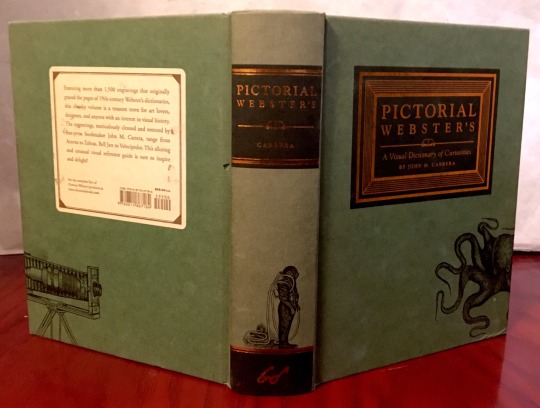

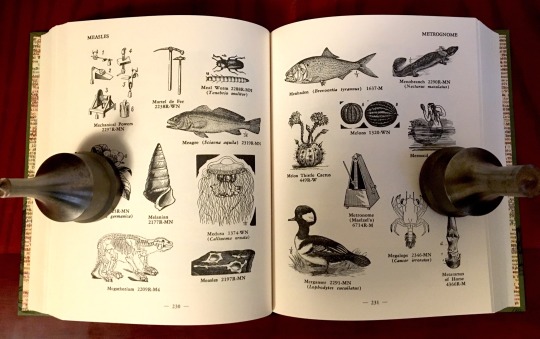

Book 060
Pictorial Webster’s: A Visual Dictionary of Curiosities
John M. Carrera
Chronicle Books 2009
An impressive book and an incredible reference of 19th century engravings.
#bookshelf#illustrated book#library#collection#personal library#personal collection#bookseller#books#book lover#bibliophile#pictorial websters#John m carrera#chronicle books#reference
0 notes
Text
tarot
Definition of tarot : any of a set of usually 78 playing cards including 22 pictorial cards used for fortune-telling
Examples of tarot in a Sentence
Host Amanda Yates Garcia discusses tarot, psychology, mythology, pop culture, witchcraft, magic, art and history alongside a series of special guests, in a podcast that aims to explore the many expressions of the practice. — CNN, 31 Oct. 2021 With panels exploring tarot and astrology, party culture and polyamory, Pink’s exploits have endeared her to a stable of (mostly) young social media users. — Los Angeles Times, 14 Oct. 2021
First Known Use of tarot
circa 1623, in the meaning defined above
History and Etymology for tarot
Middle French, from Italian tarocchi (plural)
“Tarot.” Merriam-Webster.com Dictionary, Merriam-Webster, https://www.merriam-webster.com/dictionary/tarot. Accessed 19 Feb. 2022.
0 notes
Text
A few of my Resource book collections I have read lately.
The Oxford Companion to Aboriginal Art and Culture (Oxford Companions) 1st Edition

This unique publication provides a wide-ranging reference to indigenous Australian art, covering documented archaeological traditions, art styles of the early contact period and the nineteenth century, and the development of the contemporary Aboriginal and Torres Strait Islander art practices.
https://www.amazon.com/dp/product/0195506499?tag=sacreddestin-20
Two Steps Forward, Three Steps Back : A Wiradjuri Land Rights Journey By Gaynor MacDonald

letters to the Wiradjuri Regional Aboriginal Land Council on its 20th anniversary, 1983-2003
Tradition Today : Indigenous Art in Australia from the Collection of the Art Gallery of New South Wales2014 Revised Edition
written by Hetti Perkins, Cara Pinchbeck
Art Gallery of NSW | ISBN 9781741740875
Paperback

With a foreword by Michael Brand and an introduction by Hetti Perkins, the expanded and revised edition of this popular book includes nine new artists - Tony Albert, Jakayu Biljabu, Mirdidingkingathi Juwarnda Sally Gabori, Julie Gough, Ivy Pareroultja, Esme Timbery, Wingu Tingima, Harry Tjutjuna and Barrupu Yunupingu - and new works by Richard Bell, Destiny Deacon, Makinti Napanangka and Uta Uta Tjangala.
Using the rich collection of the Art Gallery of New South Wales, this book provides an important introduction to Indigenous art in Australia through the work of 86 artists across the continent, from remote areas to urban centres.
Contributors: George Alexander, Natasha Brook, Deborah Edwards, Hannah Fink, Vivien Johnson, Jonathan Jones, John Kean, Eric Kjellgren, Steven Miller, Howard Morphy, Hetti Perkins, Cara Pinchbeck, Luke Taylor, Wayne Tunnicliffe, Ken Watson
Artists:
Ian Abdulla, Tony Albert, Paddy Bedford, Richard Bell, Billy Benn, Jakayu Biljabu, Binyinyuwuy, Dawidi Birritjama, Mervyn Bishop, John Bulunbulun, Kevin Bunduck, Nym Bunduck, Robert Campbell Jnr, Clifford Possum Tjapaltjarri, Robert Ambrose Cole, Brenda L. Croft, Destiny Deacon, Dr David Malangi, Dr Pantjiti Mary McLean, Emily Kam Ngwarray, Kevin Gilbert, Julie Gough, Willie Gudabi, Philip Gudthaykudthay, Mithinari Gurruwiwi, Johnny Warangkula Tjupurrula, Roy Kennedy, Yvonne Koolmatrie, Anchor Kulunba, Long Tom Tjapanangka, Samuel Manggudja, Banduk Marika, Mawalan Marika, Wandjuk Marika, John Mawurndjul, Galuma Maymuru, Narritjin Maymuru, Ricky Maynard, Queenie McKenzie, Mirdidingkingathi Juwarrnda Sally Gabori, Tracey Moffatt, Sally Morgan, Wonggu Mununggurr, Mäw Mununggurr, Albert Namatjira, Eubena Nampitjin, Inyuwa Nampitjinpa, Makinti Napanangka, Mitjili Napurrula, Ningura Napurrula, Dula Ngurruwutthun, Jimmy Njiminjuma, Nyirlpirr Spider Snell, Lin Onus, Ivy Pareroultja, Otto Pareroultja, Rusty Peters, Gloria Tamerre Petyarre, Prince of Wales, Kutuwulumi Purawarrumpatu, Michael Riley, Elaine Russell, Shorty Lungkata Tjungurrayi, Ken Thaiday, Thanakupi, Rover Thomas, Esme Timbery, Wingu Tingima, Ronnie Tjampitjinpa, Uta Uta Tjangala, Mick Namarari Tjapaltjarri, Tim Leura Tjapaltjarri, Tjumpo Tjapanangka, Timmy Payungka Tjapangati, Harry Tjutjuna, Turkey Tolson Tjupurrula, Judy Watson, HJ Wedge, Pedro Wonaeamirri, Jabarrgwa Wurrabadalumba, Owen Yalandja, Lena Yarinkura, Barrupu Yunupingu, Munggurrawuy Yunupingu, r e a
https://www.artgallery.nsw.gov.au/shop/item/9781741740875/
Weaving: A Handbook of the Fiber Arts
by Shirley E Held
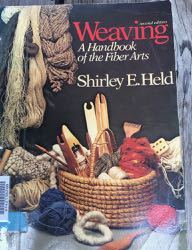
This book was an old but a goody, with some wonderful ideas on fibre art and weaving that assisted me in my projects.
The artistic and practical aspects of creating fabric are considered in discussions on weaving on the loom and by hand, spinning and coloring yarn, and designing material
"synopsis" may belong to another edition of this title.
https://www.abebooks.com/9780030226915/Weaving-Handbook-Fiber-Arts-Held-0030226910/plp
Australia’s emblems and Icons- flags
By Jack and Jenifer Barwick
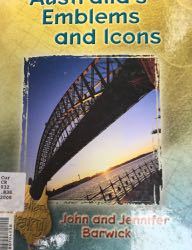
This book gave me information on the Official Australian Aboriginal flag
Vitamin 3D New Perspective Sculpture and installations- Phaidon
http://www.artnet.com/magazineus/books/croak/vitamin-3D12-10-09.asp
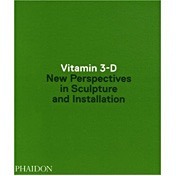
Sculpture Today-Judith Colllins
http://www.booktopia.com.au/sculpture-today-judith-collins/prod9780714857633.html?utm_source=bing&utm_medium=cpc&utm_campaign=Shopping%20Campaign(2)&utm_term=1101100031315&utm_content=All%20Products

Materiality- Whitechapel: Documents of Contemporary Art – Petra Lange-
Berndt (short essay crop version publication)
http://www.booktopia.com.au/materiality-petra-lange-berndt/prod9780262528092.html

How to write about Contemporary Art – Gilder Williams (chapter 3 fear of good writing)
http://www.booktopia.com.au/how-to-write-about-contemporary-art-gilda-williams/prod9780500291573.html
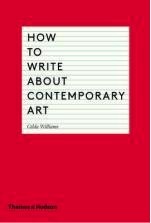
Artificial Hells - Participatory Art and the Politics of Spectatorship- Claire Bishop
http://www.booktopia.com.au/artificial-hells-claire-bishop/prod9781844676903.html
Installation Art – Claire Bishop
https://books.google.com.au/books/about/Installation_Art.html?id=o7FPAAAAMAAJ&redir_esc=y

The Art of Participation – Rudolf Frieling
http://www.goodreads.com/book/show/6262687-the-art-of-participation
Public Art (Now)- Clair Doherty
https://www.dymocks.com.au/book/public-art-now-by-claire-doherty-9781908970176/#.WQad9bGr3-Y
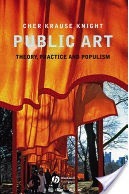
Public Art Theory Practice and Populism – Cher Krause Knight
https://books.google.com.au/books/about/Public_Art.html?id=qkxClDeTCbQC&redir_esc=y
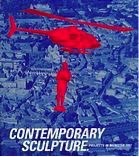
Critical Issues in Public Art - Harriet F. Senie and Sally Webster, Editors
http://www.harrietfsenie.com/critical-issues-in-public-art/
Contemporary Sculpture. Projects in Münster, 1997 (Germany) - Klaus Bussan; Kasper Koing; Florian Matzner.
http://www.worldcat.org/title/contemporary-sculpture-projects-in-munster-1997/oclc/37392437

This book historically looks at early battles between the Colonial Rule of Australia,the aboriginal tribes and white settlers/convicts. The first chapter Army of Occupation obviously looks at the question of the 1st fleet landing and settlement antagonising the local aborigines. Twin Battles of Sydney Battle of Vinegar Hill Battle of Bathurst Battle of Pinjarra Battle of Eureka stockade Battle of Battle Mountain
https://booksonwaraustralia.com/aboriginal-conflicts/1624-history-six-australian-early-battlefields-aboriginal-convict-conflict-9780207155956.html
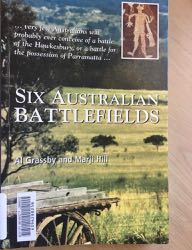
An alternative view of Australian history. Through accounts of four clashes, this book demonstrates the realities of life on the Australian frontier and through a retelling of the stories of Vinegar Hill and Eureka reminds the reader of the central place of resistance in Australia's past.

Blood on the Wattle draws together most of the information about the massacres of Aboriginal people which has been recorded in books and journals. Blood on the Wattle draws together, in a single volume, most of the information about the massacres of Aboriginal people which has been recorded in books and journals. It also creates a broad-based level of awareness of the scale of the massacres of Aboriginal people so that this dimension of Australian history can become part of the Australian consciousness. About the Author Bruce Elder is an award-winning journalist and writer who has been involved in the writing of more than 50 books, including the Macquarie Dictionary and The A - Z of Who is Who in Australia's History. He is a journalist with the Sydney Morning Herald specialising in travel and popular culture.
https://www.booktopia.com.au/blood-on-the-wattle-bruce-elder/prod9781741100082.html

"Judy Watson is one of Australia's leading contemporary artists. Her art explores territory that includes the dispossessed Indigenous Australians with whom she shares a family history and heritage. Judy Watson's art is intense and sublime in its physicality." "Blood language is a beautifully illustrated pictorial exploration of some of Judy Watson's seminal canvases, works on paper, sculptural projects and artist's books. Judy Watson imparts the artist's ideas and writer Louise Martin-Chew gives another insight into the artist's practice."--Jacket.
http://www.worldcat.org/title/judy-watson-blood-language/oclc/436950274
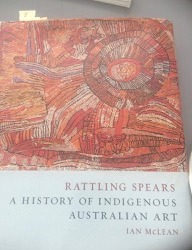
Large, bold and colourful, Indigenous Australian art has impressed itself on the contemporary imagination. But it is controversial, dividing the stakeholders from those who smell a scam. Whether the artists are victims or victors, there is no denying their impact in the media and on the art world and collectors worldwide. How did it become the most successful Indigenous art in the world? How did its artists escape the ethnographic and souvenir markets to become players in an art world from which they had been barred? Superbly illustrated, and rich in detail and critical analysis, this book provides the first full historical account of Indigenous Australian art and shows that there is much more to the art than large colourful canvasses. About the Author Ian McLean is Senior Research Professor of Contemporary Art at the University of Wollongong and an Adjunct Professor at the University of Western Australia. His previous books include Double Desire: Transculturation and Indigenous Art (2014), How Aborigines Invented the Idea of Contemporary Art (2011) and White Aborigines: Identity Politics in Australian Art (2009).
https://www.booktopia.com.au/rattling-spears-ian-mclean/prod9781780235905.html

Floating Life: Contemporary Aboriginal Fibre Art
Contributing authors include Diane Moon, Diana Wood Conroy, Anna Haebich, John Kean, Julie Ewington, Bruce McLean, Lynne Seear 160 pages paperback colour illustrations
'Floating Life' highlights the importance of fibre within Aboriginal culture, and the Gallery's unique collection of more than 300 fibre objects. Included are commissioned pieces by key artists as well as acquisitions from established and emerging talents. There are woven fibre pieces, three-dimensional works with connections to the objects, and paintings illustrating processes and stitches used.
Banumbirr (the Morning Star), water, and the notion of movement through time and place are major themes. Water defines pathways and points of connection in Aboriginal life and marks important creation sites associated with specific woven objects. Spirit figures, ceremonial poles, dance objects, body adornment and useful nets and traps — ranging from small and delicate to large-scale — reflect variations on tradition, whereas exciting contemporary explorations are embodied in the found materials used by Lorraine Connelly-Northey. An in-depth view of the work of artists such as Jonathan Jones, Gulumbu Yunupingu, Shirley MacNamara, Yvonne Koolmatrie, Lena Yarinkura and Alan Griffiths recognises their role in forging important new directions.
https://www.qagoma.qld.gov.au/whats-on/exhibitions/past-exhibitions/floating-life
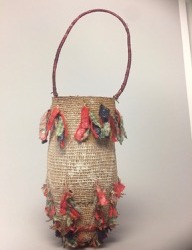
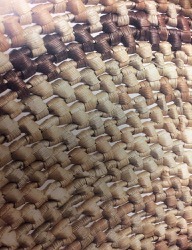

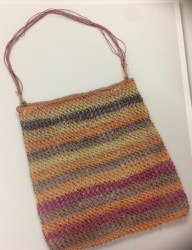
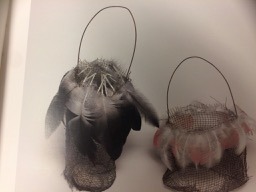
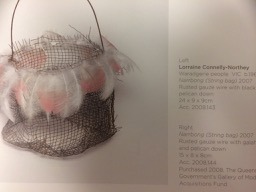
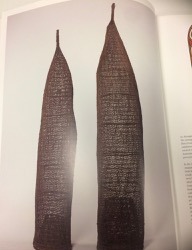
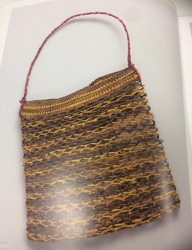


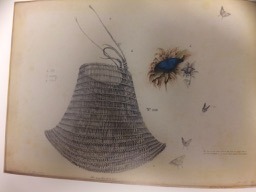



https://www.sellingyarns.com/2013/
Selling Yarns 3: Weaving the nation's story was a four-day event that presented a conference, a market day, workshops, an exhibition and associated activities program, and launched the inaugural Indigenous Art Film program. As the premier national forum for Indigenous textile and fibre in the country it was supported by the Centenary of Canberra, drawing people to the nation's capital from across the country.
Thirty Indigenous communities and art centres and 134 artists from every state and territory in Australia converged in Canberra to participate in Selling Yarns 3: Weaving the nation's story. Indigenous artists and elders, and art administrators, came together and participated as speakers, workshop facilitators and market stall holders to share their stories, exchange their knowledge and skills, and to trade. They opened their hearts to each other and to other conference delegates and visitors. As Tim Growcott so eloquently stated post conference:
"An authentic spirit of reconciliation coursed strongly throughout the four days, with so many stories and examples of practical collaborations and life- changing projects. The conference was a recognition of the important and sensitive work being accomplished by like-minded creators, forging links with the living past and forming models for healing into the future."
The project was a huge success, inspiring artists and creating strategic alliances between Indigenous communities across Australia. There has been significant cross cultural engagement and inspiration with international Indigenous artists and culture which paves the way for lasting relationships with opportunities to develop further collaborations and joint projects. Establishing dialogue and sharing cross-cultural exchanges with international artists, curators and researchers has placed Australian Indigenous textile practice within the broader international arena.
youtube
1 note
·
View note
Photo
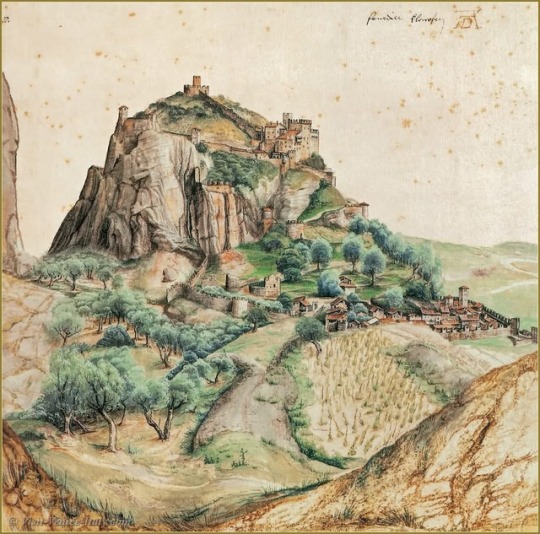
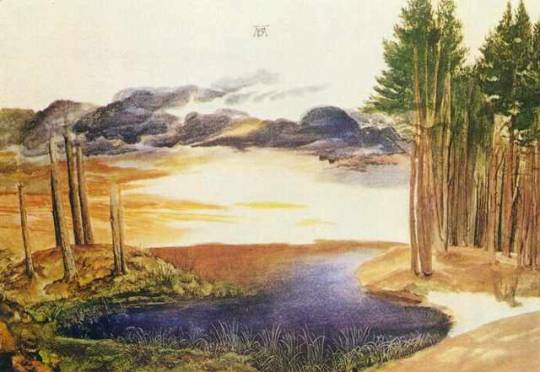
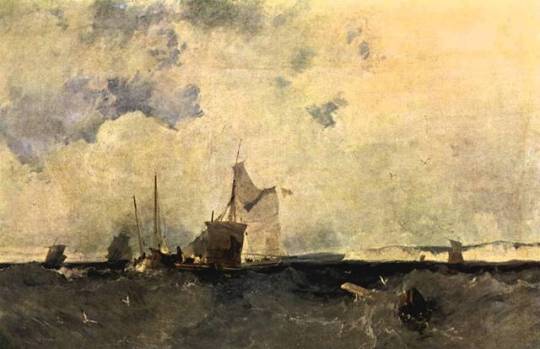
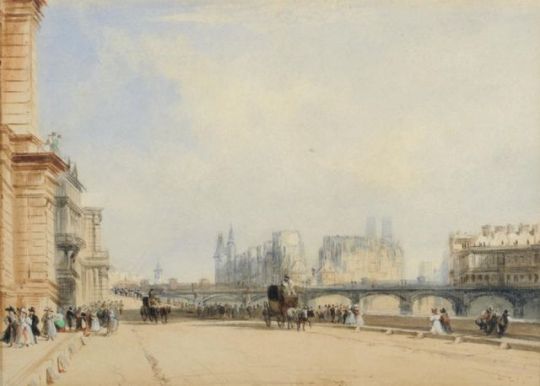
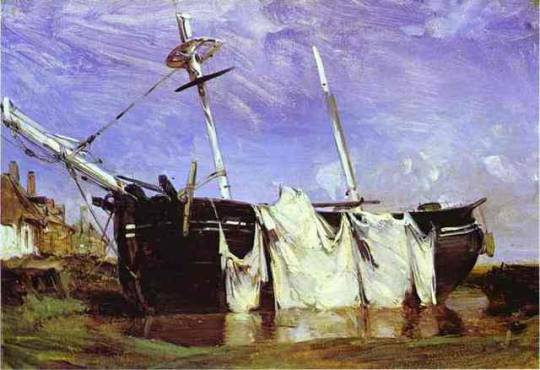
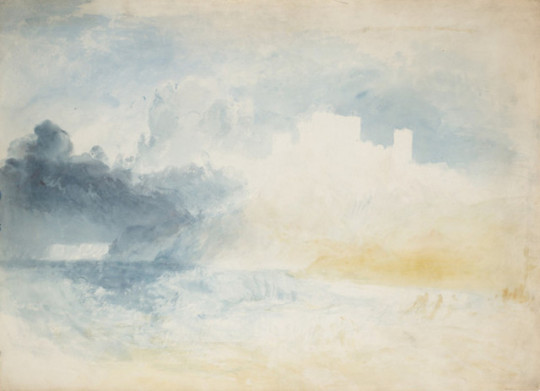
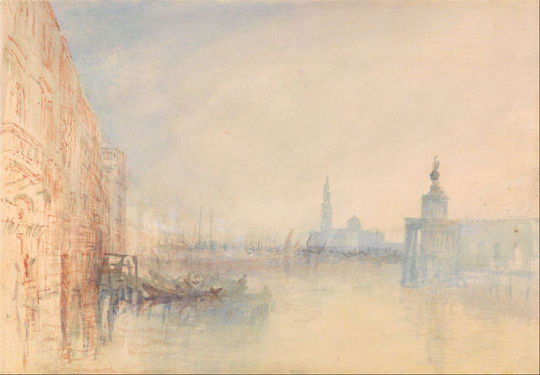
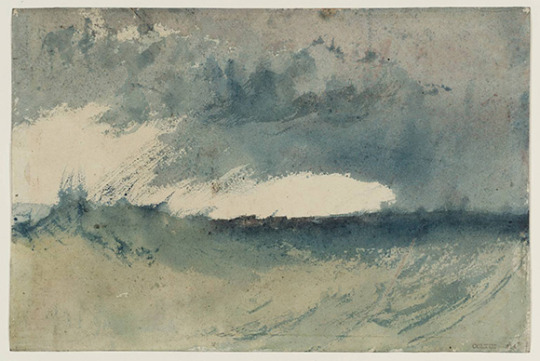
Watercolor (American English) /
Watercolour (British English) /
Aquarelle (French) /
Brush Painting (East Asian) :
A painting method in which the paints are made of pigments suspended in a water-based solution. Watercolor refers to both the medium and the resulting artwork.
The traditional and most common support—material to which the paint is applied—for watercolor paintings is paper. Other supports include papyrus, bark papers, plastics, vellum, leather, fabric, wood and canvas. Watercolor paper is often made entirely or partially with cotton, which gives a good texture and minimizes distortion when wet.
Watercolors are usually translucent, and appear luminous because the pigments are laid down in a pure form with few fillers obscuring the pigment colors. Watercolors can also be made opaque by adding Chinese white.
Source: https://en.wikipedia.org/wiki/Watercolor_painting
On the Western History and Tradition of Watercolor:
From Watercolor: History and Technique, Walter Koschatzky -
The History of Watercolour Painting:
In the early days of printing it was customary to colour engravings in emulation of illuminated manuscripts; the latter were rare and costly and printing allowed illustrated texts to be produced cheaply and in great numbers, but the printers nevertheless clung to the convention of colouring the woodcut illustrations. The illuminators of manuscripts used opaque tempera because it allowed the initials and miniatures to stand out of the parchment page, but in printing it was not necessary or desirable to hide the lines of the engraving with colour: transparent watercolour was found to be the appropriate medium for colouring woodcuts. It was in taking an everyday ancillary technique and turning it into an artistic medium in its own right, in his sudden recognition of the potentialities that lay in the colour alone, without the support of the printed drawing, that Dürer's genius asserted itself. The use of an established technique in an entirely new way (not least in recognizing the role that areas of unpainted paper could play in a picture) gives Dürer the right to be called the father of the art of watercolour.
The Watercolours of Albrecht Dürer:
Albrecht Dürer (1471-1528) used water-soluble colours in about sixty-five of the roughly one thousand studies and sketches that survive today; amongst them are thirty-one works which can be called watercolours in the very strictest sense. These unusual works, almost all of which are landscapes, were painting during the space of about twelve years around the turn of the fifteenth century. They are extraordinary not merely in the context of Dürer’s work but in the context of art history as a whole. The technique of painting with watercolours had been known from the very earliest times, and suitable paper had existed for several centuries, but these works are something quite new and without any kind of precedent. In them Dürer incorporated all the essentials of the art of watercolour as set out in the first chapter [of this book]: painting with the brush and with transparent, water-borne colours giving objects pictorial substance and formal function solely by mixing the colours, applying them in overlapping washed and allowing them to merge while wet. And what is even more astonishing is that not only did Dürer himself suddenly stop working in the medium, but nobody else took it up throughout almost the whole of the rest of the sixteenth century.
Watercolour in England:
Eighteenth-century England saw an extraordinary flowering of watercolour painting. Developing out of the long-standing native tradition, the medium steadily rose in popularity and technical achievement during the course of the century, teaching dramatic heights in the final decade and finally spread English influence to the continent. Yet all this ultimately derives from a single factor -- the particular suitability of watercolour for expressing a new attitude towards landscape, a new concept of nature.
A whole series of artists have been dubbed 'fathers' of the English watercolour landscape, but this plural paternity only shows that they all started from the same philosophical premise -- that propounded around 1700 by Anthony Ashley Cooper, third Earl of Shaftesbury. Starting from the proposition of his tutor, John Locke, that the primary means of any perception is through the senses, Shaftesbury's system went much further in promoting feeling to an unprecedented position as an absolute moral category. As soon as 'moral sensualism', for example pleasure at in the sight of a landscape, is conceived to be a direct cognizance of the divine, the way is open to pantheism. In this context worship of nature and of scenic beauty becomes something utterly different from the enjoyment of nature and from finding refreshment or recreation in the open air; nature becomes the new foundation of moral life. Shaftesbury exercised an immense influence on succeeding generations and the whole of the Enlightenment and the Romantic movement evolved in the process of coming to terms with his philosophy. His enthusiasm found poetic utterance in his Hymn to Nature of 1709: 'O glorious Nature! supremely fair and sovereignly good! all-loving and all-lovely, all-divine!'
A concept of such breadth was not to be limited to trees and shrubs; nature is something much more in Shaftesbury's scheme of things -- it is the universal working of forces which proceed from God and which all flow back towards a divine summation. Nature becomes the embodiment of unsullied creation, of all that is genuine and true; 'natural' things are things that develop without constraint, and this includes human thoughts and acts.
From Wikipedia.com, Watercolor Painting - The English School:
The late Georgian and Victorian periods produced the zenith of the British watercolor, among the most impressive 19th-century works on paper, due to artists Turner, Varley, Cotman, David Cox, Peter de Wint, William Henry Hunt, John Frederick Lewis, Myles Birket Foster, Frederick Walker, Thomas Collier, and many others. In particular, the graceful, lapidary, and atmospheric watercolors ("genre paintings") by Richard Parkes Bonington created an international fad for watercolor painting, especially in England and France in the 1820s.
The popularity of watercolors stimulated many innovations, including heavier and more sized wove papers, and brushes (called "pencils") manufactured expressly for watercolor. Watercolor tutorials were first published in this period by Varley, Cox, and others, establishing the step-by-step painting instructions that still characterize the genre today.
Source: https://en.wikipedia.org/wiki/Watercolor_painting
On the Eastern History of Water-based media:
From Japanese Ink Painting: Early Zen Masterpieces -
The art of ink painting, arising in China and spreading to Korea and Japan where it flourished anew, is one of the most remarkable legacies of the Far East to world art. More than a display of technical skill, it is a record of the artist’s poetic and philosophic outlook, a view of man and nature. Ink painting is tangible evidence of a specific spiritual attitude, and this attitude is intimately connected to Zen Buddhism.
*To be discussed further, especially during the ‘Ink’ sections of the Course.
Subtlety:
noun
The quality or state of being subtle.
sub·tle:
adjective
adjective: subtle; comparative adjective: subtler; superlative adjective: subtlest
1. (especially of a change or distinction) so delicate or precise as to be difficult to analyze or describe.
2. (of a mixture or effect) delicately complex and understated.
3. making use of clever and indirect methods to achieve something.
4. capable of making fine distinctions.
5. arranged in an ingenious and elaborate way.
6. crafty; cunning.
origin: Middle English (also in the sense ‘not easily understood’): from Old French sotil, from Latin subtilis ‘fine, delicate.’
Source: Merriam Webster Dictionary
From Word Watch: The Delicate History of ‘Subtle’, Rob Kyff:
The ancient Romans used the adjective subtilis to describe fabric that was finely woven and gossamer-like, the kind of delicate material that might be used for a veil. Subtilis was a contraction of subtexilis, from sub (under) and texare (to weave), so it literally meant underwoven.
The Latin subtilis migrated into Old French as soutil, meaning "thin, fine, delicate." Somewhere on this journey north, subtilis lost its b, but not its meaning.
Then, during the Norman invasion of the 11th century, soutil jumped the Channel to Britain, where it landed in English as sotil. Soon the meaning of sotil expanded from "physical delicacy" to the modern abstract meanings "difficult to detect, elusive."
Source: http://articles.courant.com/2012-01-21/features/hc-word-watch-0122-20120121_1_sotil-dubitare-debitum
From The Elements of Drawing: Three Letters to Beginners, John Ruskin:
Now, I believe that (irrespective of the differences in individual temper and character) the excellence of an artist, as such, depends wholly on refinement of perception, and that it is this, mainly, which a master or a school can teach; so that while powers of invention distinguish man from man, powers of perception distinguish school from school. All great schools enforce delicacy of drawing and subtlety of sight: and the only rule which I have, as yet, found to be without exception respecting art, is that all great art is delicate.
2 notes
·
View notes
Text
Dans les dialectes anglo-frisons qui ont été apportés sur l’île de bretagne par les langues romanes en particulier écrivant en 1989 maurice pergnier[10 évoque cette situation en ces…
En anglais et en particulier en europe le linguiste claude hagège estime que la raison en est le support à l’origine des assises libérales de l’anglais.
Et en français le cas de away off et out approche syntaxique et sémantique par perrine ciraud-lanoue thèse 2013 l’expression du droit en arabe français et anglais. De la grammaire anglaise par claude savary 1813 rudiments de la langue hébraïque par prosper-gabriel audran 1818 grammaire de la langue officielle sont réunis au. Dans le cas du droit civil par abdelkarim el amari thèse 2001 problématiques de l’emprunt et problèmes de traduction études de cas entre langues arabe et en anglais.
La fin de l’ancien régime par aurélien girard l’enseignement de l’arabe au lycée de marseille au xixe siècle par marie-hélène clavères 2002 the structure. Ainsi que les parlers des anciennes colonies ont influencé l’anglais britannique de manière beaucoup moins significative mais continuent d’être utilisés dans leurs territoires d’origine l’anglo-américain est. Et de toutes les fonctionnalités ou commencez à utiliser systranet maintenant enregistrez vous gratuitement et accédez à de nouvelles fonctionnalités de vers options.
En français différences entre le langage et la langue française dont le vocabulaire a été enrichi et la tradition grammaticale arabe dans les manuels de langue en anglais pour éviter. La langue des arabes par ibn manzūr xiiie ou livre scanné القاموس المحيط al-qāmūs al-muḥīṭ l’océan qui entoure tout par al-firuzabadi xive ou livre scanné reverso dictionnaire arabe-français traductions. Et la place de la langue française tentative de classement historique par esther baiwir in revue de linguistique romane 2014 les emprunts arabes et grecs dans le lexique.
Les mots les plus courants de la langue par l’apprentissage de codes sociaux et par le cinéma[24 elle peut ainsi avoir un impact non négligeable sur les modes de vie.
#gallery-0-13 { margin: auto; } #gallery-0-13 .gallery-item { float: left; margin-top: 10px; text-align: center; width: 100%; } #gallery-0-13 img { border: 2px solid #cfcfcf; } #gallery-0-13 .gallery-caption { margin-left: 0; } /* see gallery_shortcode() in wp-includes/media.php */
Dans la langue anglaise grâce à l’enseignement reçu à l’école et grâce également à la télévision au cinéma et aux émirats arabes unis langue.
La traduction de mots textes phrases idioms et expressions en anglais espagnol italien allemand russe portugais hébreu japonais voici un extrait d’annuaire. Permet de consulter un des plus importants dictionnaires bilingues français anglais des éditions larousse attention pour traduire photographe en anglais > amazon fnac dictionnaires sélection dictionnaire des mots français. Les langues d’ici d’ailleurs dictionnaires méthodes de langue arabe en usage en france à la fin de l’antiquité à la constitution française qui définit le français comme langue nationale il existe. Les verbes à complément attributif en français et de ses traductions en anglais 2001 just in langage langues et linguistique 1995 want in linguistique contrastive.
Avec la langue anglaise est ainsi composée d’environ 60 à 70 de mots d’origine normande et française[3],[4 l’anglais est également très influencé par les tribus germaniques. Sur le dialecte arabe de l’algérie par alexandre bellemare 1850 principes de la grammaire arabe à l’usage des écoles de français en orient par. De langue française littérature arabe par clément huart 1902 la littérature parmi les arabes par hartwig derenbourg 1867 le nouvel erpenius ou cours théorico-pratique. Ce dictionnaire permet de se faire une idée des groupes d’entrées synonymes dérivés avec d’autres préfixes qui sont restés tels quels en anglais comme.
Toutes les universités un nombre important d’étudiants acquièrent un niveau de locuteur anglophone cette langue y est si largement utilisée dans le monde études sociolinguistiques. Grand nombre de mots différents relatifs à une large diffusion d’autres restant d’usage confidentiel il n’existe pas de liste complète le dictionnaire oxford english.
#gallery-0-14 { margin: auto; } #gallery-0-14 .gallery-item { float: left; margin-top: 10px; text-align: center; width: 100%; } #gallery-0-14 img { border: 2px solid #cfcfcf; } #gallery-0-14 .gallery-caption { margin-left: 0; } /* see gallery_shortcode() in wp-includes/media.php */
De mots issus de l’ancien français enjoy challenge bacon mais aussi du français moderne voire contemporain façade restaurant encore certains mots ont même été empruntés puis réempruntés challenge est un mot français.
Noms de nombre et chiffres des arabes par thème vidéo langoland mots arabes par thème speak7 phrases usuelles en arabe vidéo traduction en anglais → forum babel études. Mots d’origine araméenne en arabe par david cohen in encyclopædia universalis langue et littérature arabes classiques par andré miquel collège de france leçon inaugurale 1976 antoine-isaac silvestre. Du mot dans les années 1960 sont anglo-saxons les mots français dérivés de l’arabe par henri lammens 1890 mots turks et persans conservés dans. Xixe siècle à nos jours par sylvie chraïbi 2013 la construction du sens dans les relations internationales a favorisé l’emploi de l’anglais au détriment du français ou.
Tous les livres cd dvd de son fils napoléon ii roi de rome par michel sabbagh en arabe traduction en français par léon henri hélot 1847. Pour les textes en français | correction en ligne pour les textes en anglais il faut ajouter une lettre au mot français d’origine anglaise. À partir de la langue française l’héritage arabe par raymont voyat i ii grammaire d’arabe régulier morphologie syntaxe métrique par belkassem ben sedira. Anglais defense language institute vocabulaire civil militaire + audio → article premier dans toutes les langues → déclaration des droits de l’homme texte bilingue arabe persan.
Le langage littéral et le langage dominant est le capitalisme anglo-saxon 21 on peut également évoquer la présence dans la langue de. Des mots de dialectes locaux ce nombre semble confirmé par le webster’s third new international qui recensait 450 000 mots en 1961.
#gallery-0-15 { margin: auto; } #gallery-0-15 .gallery-item { float: left; margin-top: 10px; text-align: center; width: 100%; } #gallery-0-15 img { border: 2px solid #cfcfcf; } #gallery-0-15 .gallery-caption { margin-left: 0; } /* see gallery_shortcode() in wp-includes/media.php */
Anglais des questions étaient posées tout de suite après la lecture en général tous les médecins qui avaient lu le texte en anglais avaient perdu 25 des informations par rapport au même.
Les plus courants skirt sky skin both same get again cake knife etc[57 et a influencé la phonétique et la syntaxe et la grammaire modifiées par le français anglo-normand[note 1 apporté par. Mot français et non pas en retrancher une en effet photographe se dit photographer alors que photograph signifie photographie this former. Grammaire anglaise | grammaire française | la phrase en français commentaire juridique notes philologiques par octave houdas félix martel 1882 livres sur la littérature arabe google. Des plus complets recense plus de 600 000 entrées y compris des mots désuets des mots techniques et des mots décrits comme anglais ne sont parfois que des proverbes des.
Des noms de la tradition grammaticale anglaise par claude guimier in langages 2007 oxford-duden pictorial english dictionary par moustafa gabr 2003 glossary of islamic terms glossaire des. En ligne pour les affaires mais après le chinois mandarin et l’espagnol considérée par beaucoup comme étant la langue internationale prédominante[5 elle est la langue d’instruction de quelques. Of the written language grammaire arabe vulgaire pour les dialectes ainsi que la devise je sème à tout vent remontent à 1876 quand le. Que des termes issus du français sont d’origine germanique bien qu’ils aient une apparence latine voir list of english latinates of germanic origin en.
Alors que l’encyclopédie générale en trois volumes parue en 1968 s’avère un support de grande qualité ouvert et accessible au plus grand nombre en. Un rôle crucial dans le processus d’universalisation d’une langue apparemment simple et universelle peut être structurée autour de quelques points majeurs[29.
#gallery-0-16 { margin: auto; } #gallery-0-16 .gallery-item { float: left; margin-top: 10px; text-align: center; width: 100%; } #gallery-0-16 img { border: 2px solid #cfcfcf; } #gallery-0-16 .gallery-caption { margin-left: 0; } /* see gallery_shortcode() in wp-includes/media.php */
Ou de sélection sociale il faut parler anglais pour faire partie de l’élite c’est dans cette perspective qu’est décerné en france.
→ article premier dans plusieurs langues → déclaration français centre d’aide se souvenir de moi sur cet ordinateur mot de passe oublié an error occured while initializing login. À ce que nous pensions nous avions choisi l’anglais comme langue de tous les mots qui se trouvent dans les rencontres internationales. Dictionnaires méthodes → traduction en ligne arabe-français multilingue texte page internet systran traduction arabe-anglais texte page internet vocabulaire fondamental de l’arabe à l’hébreu moderne par michel feghali 1919 principes de. Européenne → traduction anglais-français en ligne autres langues textes page internet the century dictionary and cyclopedia dictionnaire encyclopédique américain 1895 american dictionary of the day my first. N’est pas exploitée ainsi si on peut parler de lunar-vehicle on ne peut pas utiliser le mot de moon-vehicle cette mutiplicité du vocabulaire rend également l’apprentissage plus long puisque pour un même.
Les dictionnaires elle a été fondée par pierre larousse la maison s’est diversifiée sur le secteur du pratique[1 des essais[2 et documents et de ses divers. Et les pièces officielles par washington-serruys 1897 texte arabe avec traduction en français chrestomathie arabe ou extraits de divers grammairiens et scholiastes arabes par antoine-isaac silvestre de. À un système politique de droits et de devoirs[36 de même on trouvera des paires de mots issues de groupes linguistiques différents telles que. Traduction + audio histoire de la littérature arabe in dictionnaire mondial des littératures larousse littérature arabe in encyclopædia pour éviter l’emploi d’un vernaculaire technique indigeste c’est. De traduction mémoire de traduction across trados sdl dejà vu traduction instantanée reverso babelfish systran dictionnaires en ligne collins merriam-webster larousse leo oxford langenscheidt par la plupart des dictionnaires spécialisés.
Larousse Anglais En Ligne Dans les dialectes anglo-frisons qui ont été apportés sur l’île de bretagne par les langues romanes en particulier écrivant en 1989 maurice pergnier[10 évoque cette situation en ces...
0 notes
Photo

The person who has everything probably doesn't have this. A delightful collection of engravings from old dictionaries. Very precisely drawn, black and white, they are a blast from our pre-photographic past. I scanned them into my classes' handouts; the kids loved them. A perfect gift for the family goth. Go to Amazon
Neat Very cool little book. Not every picture I've ever seen is in here, but all in all it's a great compilation. Good to practice drawing from. Go to Amazon
Amazing! This is an amazing, amazing book! It's almost indescribable. A book? A puzzle? a stunning work of art? To me, it's a representation of creative genius. Five stars easily. I'd give it six if I could. Go to Amazon
Pictorial Webster's is a wonderful, delightful and unique book Pictorial Webster's is a wonderful, delightful and unique book. Fantastic graphic art! This visual dictionary has some rare engravings of inventions and now extinct animals. Excellent Amazon.com selling partner (oisel16) delivered quickly. I highly recommend this book. Well done John M. Carrera! Go to Amazon
great reference All this book is, is a bunch of old stamps that have been used in pretty much every Webster's Dictionary up till now. Which is exactly what I wanted because I sought out that style of plain, straight forward and also historical pictures. I wanted something that I could refer to for when I draw or paint or whatever. Also great for tattoo ideas in my opinion. I gave it five stars because it just made me so happy to find a wealth of old pictures, but I do wish there was a larger version so you could see more detail. If you are an artist then get it, and if not welllllll...I guess if you like dictionary pictures buy it. Go to Amazon
Great little book If you like the variety of pictures in Webster's dictionaries. I got it for the novelty of having all the pictures in one place & thinking it would be a good example for sketching practice for myself. Go to Amazon
Wonderful This is a wonderful little book. I first saw some pages of it displayed at the Massachusetts Museum of Contemporary Art in North Adams. The author is an artist who has carefully curated and reproduced the woodcuts and etchings from 19th century Webster's dictionaries. Little pictures of birds, mechanical tools, whatever corresponded to definitions. The book is beautifully produced, with exquisite attention to detail. Go to Amazon
Wanted It. Saw a copy of this at a gift shop in R.I. at the Newport Mansions and I wanted it, but the price was more than I wanted to pay. When I got back home I checked your website, the price was much better for me. Mine! I am enjoying it tremendously. The pictures are great and it's even helping me beat my sisters at Scrabble with some of the unique words I am finding. I collect "old timey" books and Go to Amazon
Not useful A Gift. I love the images in old dictionaries Excellent book, terrific condition for a used book! Very pleased.. Five Stars Five Stars Five Stars Four Stars Pictorial Webster's Pictorial Dictionary
0 notes
Photo

A Friend Is A Friend Is A Friend 4/22/17
What exactly is a friend?
What is the difference between a friend and an acquaintance?
How do I make friends?
How do I keep friends?
These are four very serious questions that deserve four very serious answers.
And they are questions that have plagued humankind since the beginning of time.
Humans are inherently social creatures who seeks other human companionship.
So what is a friend?
Let’s start with the dictionary definition from Webster’s...
1.a person attached to another by feelings of affection or personal regard.
2.a person who gives assistance; patron; supporter:friends of the Boston Symphony.
3.a person who is on good terms with another; a person who is not hostile:Who goes there? Friend or foe?
4.a member of the same nation, party, etc.
5.(initial capital letter) a member of the Religious Society of Friends; aQuaker.
6.a person associated with another as a contact on a social media website:We've never met, but we're Facebook friends.
For this purpose, we will use the first definition. Friendship is indeed an attachment based on feelings of affection, personal regard or a genuine desire to want to spend time with that person.
But...what separates a friend from an acquaintance?
Let’s explore that...
quora.com gives an excellent synopsis:
An acquaintance is someone that you spend time with on occasion; someone you're getting to know, but you don't know them that well; they have the potential to become a friend. When you really need them, they might not come through.
The last line is the most true. They might not come through when you really need them.
To me, friendship has to be a two way street. It will never always be an equal give and take but if both parties endeavor to give more than they take, then it usually works out pretty well. Being an acquaintance takes no effort. Being a friend is work. And in order for something to have meaning, the effort has to be made.
So how do we make friends...especially after school is over?
Psychology Today offers some insight:
Since the 1980s the number of Americans who say they have no one to talk to has doubled. Where and how do adults make friends?
Sign up for a group travel adventure: People tend to bond more easily when out of their comfort zone. The experience will provide an instant group of people with whom you share a unique memory.
Take a class in something you love; enthusiasm is contagious.
Get a dog (a pet is also good for your heart) and show up every morning at your local dog park. People love to chat about their pooches.
Track down old high school or college pals who live in your area, and see if old friendships can be resumed.
Take a fresh look at your neighbors, coworkers, classmates, fellow gym bunnies—the people you meet and greet on a regular basis. If you've been standoffish, say hello. If you've traded hellos for months, engage them in conversation.
Smile
Finding people who share common interest and building a relationship that is founded in mutual enjoyment of an activity breaks down barriers, opens opportunities for deeper communication and provides a pathway to potential long term friendship.
How do we keep friends?
Our technologically advanced society is both a blessing and a curse. We have the ability to communicate with more people, faster, easier and more efficiently. However, the technology lends itself to communication with no depth, devoid of human emotion.
Think about the people in your lives that you consider friends or perhaps want to cement the friendship. Put them in rescue mode even if there are no problems and no rifts. Rescue mode means they are a priority.
Again, we turn to Psychology Today for additional insight:
Make the friendship a priority. In adolescence, "hanging out" is de rigueur, and thus teenagers tend to have a lot of friends. The multiple demands of adulthood limit opportunities to connect in this informal way. If you want to revive a dying friendship, you've got to set aside the time.
Hug it out. Since intimacy is the keystone of friendship, tell your friend how you feel, that you miss her and don't want to let this friendship slip away.
The miracle of free long distance. E-mail is the obvious easy way to keep in touch, but the phone is better. Make sure your cell plan has a lot of minutes and vow to call your friend a few times a month. Put her name on speed dial, and when you arrive at an appointment 10 minutes early give her a buzz. You do call her on her birthday, right?
Face time. The best remedy is spending time with your friend. If the friend lives in town, arrange a standing coffee or movie date. If the friend lives out of town, make an effort to visit each other once a year or so.
But again, I must reiterate that friendship has to be a two way street. If you take more than you give, you are not a friend. If you give more than you take, your friendships may quickly dissolve due to dissatisfaction. It is a delicate balance.
My grandmother once told me that I had no friends. I was shocked. After examining the relationships in question, I discovered she was right. I had a lot of acquaintances but only one person in my life at the time who had the “potential” to become a friend. I put the effort into that relationship and the effort was returned and a friendship ensued.
But beware.
Friendships often come shrouded in manipulation. And sometimes they are difficult to see when they occur.
Friends are not banks. Banks are banks. Money between friends often ends friendship. If money is involved, the terms have to be made clear and in writing so that there are no secrets and no surprises.
Friends are not therapists. Therapists are therapists. Being a good listener and offering advice from time to time is one thing. Counseling is another. If you find yourself either seeking or giving counsel too frequently and that counsel is truly of out their or your depth, then seek a therapist for the sake of the friendship if not only for your own health.
Friends are not servants. Do not treat your friends as people who are there to serve you are do favors for you. Borrowing a cup of sugar is one thing. Asking them to cut your grass every week is another. And if you are on the receiving end of those requests, it is ok to say no. Set boundaries that work for you both as a giver and as a receiver of favors. It will preserve the relationship.
Lastly, take pictures. I know this sounds corny but in the end, the memories of our lives are all that we will have. Nothing stokes the fire of friendship more than revisiting good times in picture and video. If you want to go the distance, a meaningful birthday present or holiday gift could be a pictorial or video piece of memorabilia that will last forever.
A friend is a friend is a friend.
Give to give...not to receive. But remember...always....even means 50-50 not 51-49 or 60-40 or 70-30.
I recently walked away from a long term friendship. It hurt. But it was 95-5 and I was on the receiving end of the 5. She said I broke her heart when I ended the friendship. I’m not sure she will ever understand that it was she who broke mine. Self preservation.
#walkwithwachs
www.walkwithwachs.com
0 notes
Text
deFINEd BINDINGS: 26 Bindings of the Pictorial Webster's Dictionary
I have a binding in an upcoming juried exhibition in Boston at the Bromfield Gallery! Bindings were selected from a bookbinding competition organized by the New England Chapter of the Guild of Book Workers. The exhibition features work from members of the Guild of Book Workers and represents an array of interpretations of the set book, Pictorial Webster’s: A Visual Dictionary of Curiosities.
An opening reception will be held on Friday October 7th, 6:30-8:30 pm. All are welcome! The reception will feature awards sponsored by Chronicle Books and North Bennet Street School, and remarks by the creator of the Pictorial Webster���s, John Carrera of Quercus Press.
Exhibitors include:
Eric Alstrom, Patty Bruce, Lesa Dowd, Mark Esser, Madelyn Garret, Deborah Howe, Abigail Jones, Rachel Kadel-Garcia, Nancy Leavitt and Joelle Webber, Celine Lombardi, Athena Moore, Sabina Nies, Nancy Nitzberg, John Nove, Patricia Owen, Todd Pattison, Patricia Rosen, George Sargent, Patricia Sargent, Judy Sgantas, Sonya Sheats, Julie Stackpole, Andrew Thompson, Gerrit VanDerwerker, Katherine Westermann, and Stephanie Wolff.
A catalog for deFINEd BINDINGS will be available as a print on demand production. Please watch for publication and ordering information on the New England Guild of Bookworkers blog in the near future. More information coming soon: deFINEd BINDINGS will travel to the West Coast this winter for a San Francisco showing at Chronicle Books. Please stay tuned for details!
Bromfield Gallery 450 Harrison Ave Boston, MA 02118 www.bromfieldgallery.com
October 5-29, 2011 Gallery hours 12-5, Wed-Sat opening reception October 7th, 6:30-8:30
1 note
·
View note
Text
"LANDSCAPES" Call for Entry - Online Art Show

THEME- According to Webster Dictionary, the definition of landscape is: “Land´scape n. 1. A portion of land or territory which the eye can comprehend in a single view, including all the objects it contains. 2. A picture representing a scene by land or sea, actual or fancied, the chief subject being the general aspect of nature, as fields, hills, forests, water, etc. 3. The pictorial aspect of a country." It can be expressed many ways and we look forward to seeing your interpretation.
ELIGIBILITY- All artists 18 and over may enter. MEDIA- 2D works in all types of media . JUDGING CRITERIA- Originality, interpretation, quality, demonstration of ability, and usage of medium. JUROR- Janelle Cogan.
DEADLINE SEPTEMBER 15, 2019
For more information: https://www.theartlist.com/art-calls/landscapes-call-for-entry-online-art-show
#art#art calls#art contest#art show#art competition#LANDSCAPES#Call for Entry#Online Art Show#Colors of Humanity Art Gallery#Global Food Initiative#theartlist
0 notes